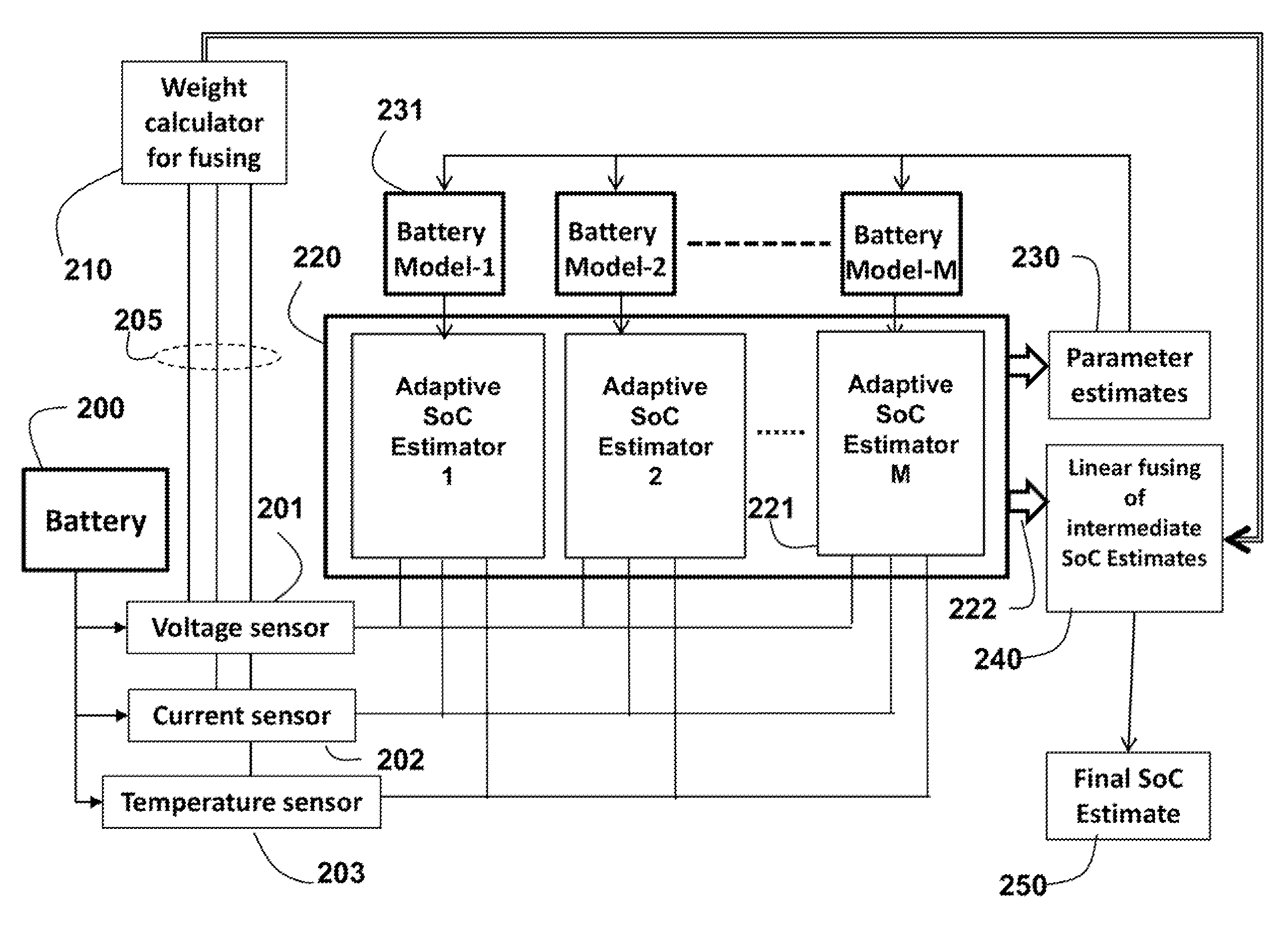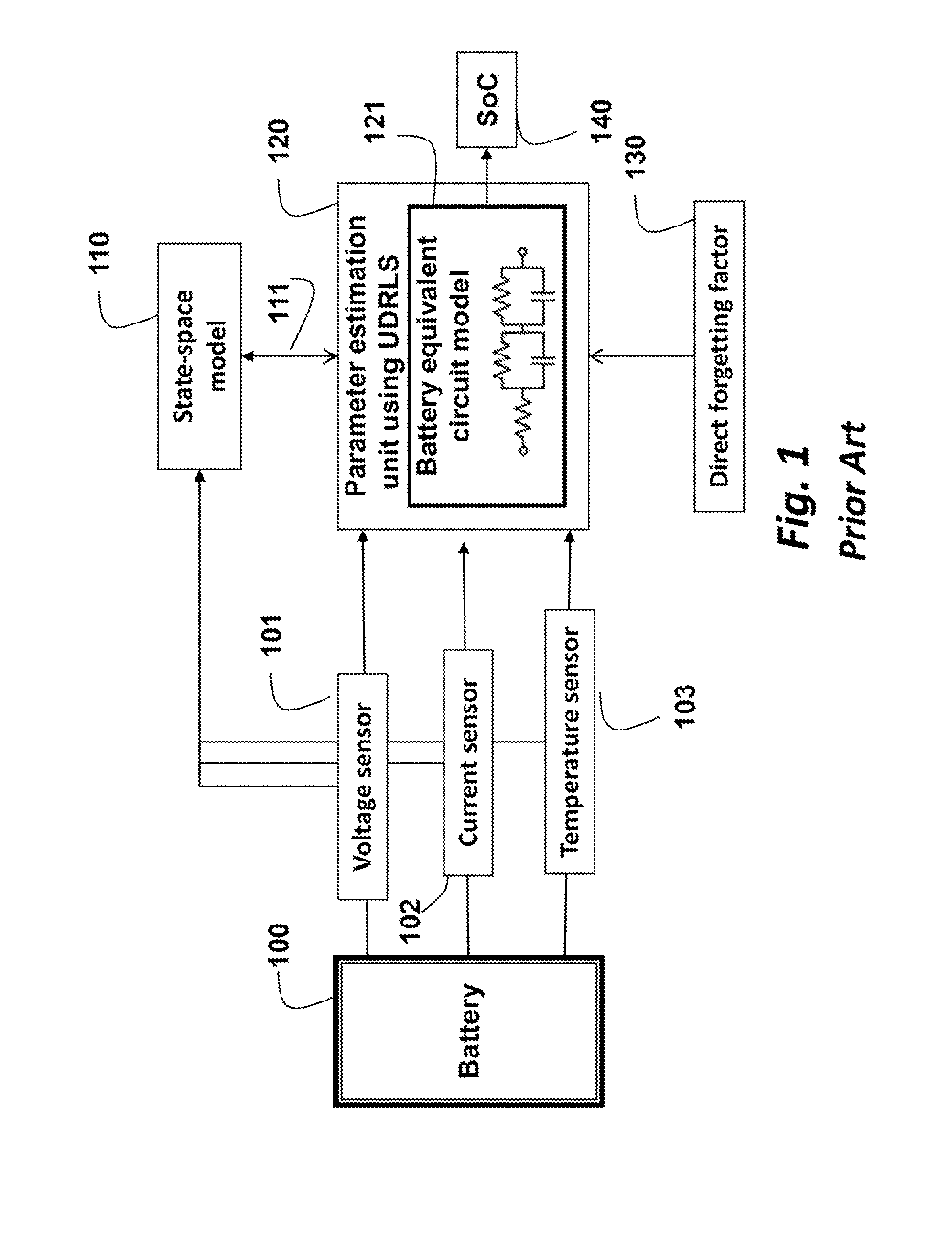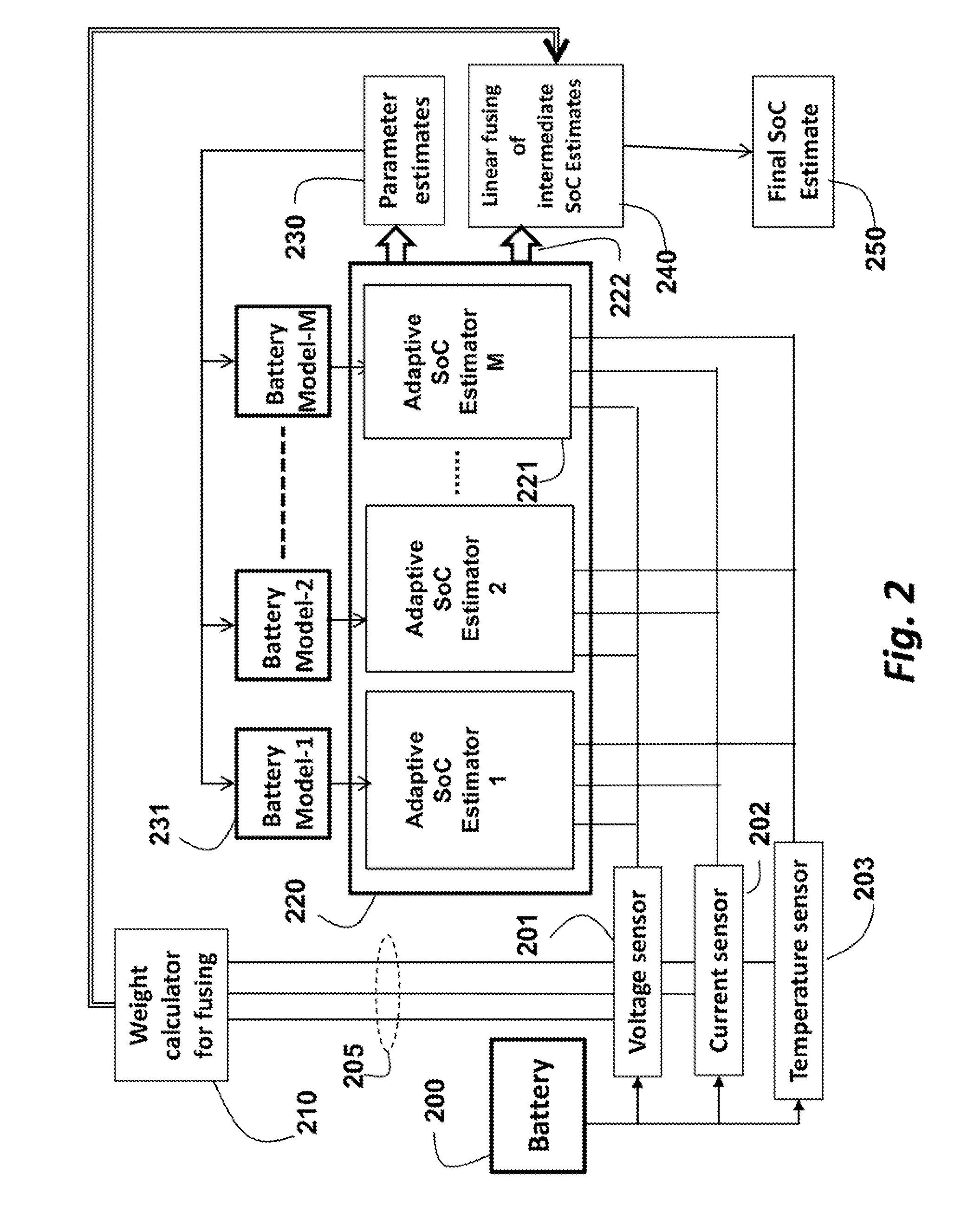Method for Estimating a State of Charge of Batteries
- Summary
- Abstract
- Description
- Claims
- Application Information
AI Technical Summary
Benefits of technology
Problems solved by technology
Method used
Image
Examples
Embodiment Construction
[0015]FIG. 2 shows a structure of a multimodel adaptive SoC (MM-AdaSoC) system according to embodiments of the invention. A battery 200 is connected to a voltage sensor 102, a current sensor 102, and a temperature sensor 103. The battery can operates according to lithium-ion chemistries, although it is understood that the invention can be used with other types of rechargeable batteries.
[0016]A weight calculator 210 is used for weighting of output of the sensors 201-203 that are used to fuse 240 intermediate SoC estimates. The estimator 220 includes a set of two or more (multiple) adaptive estimators 221, 1, . . . , M. There is a corresponding battery model 231 for each adaptive estimator. The estimator 220 determines parameters 230 for the models 231. The intermediate SoC estimates that are output by the adaptive estimators 221 are fused 240 to obtain a final estimate of the SoC 250.
[0017]Each parallel state-of-charge estimator 221 is based on different models 231. Each estimator us...
PUM
 Login to View More
Login to View More Abstract
Description
Claims
Application Information
 Login to View More
Login to View More - R&D
- Intellectual Property
- Life Sciences
- Materials
- Tech Scout
- Unparalleled Data Quality
- Higher Quality Content
- 60% Fewer Hallucinations
Browse by: Latest US Patents, China's latest patents, Technical Efficacy Thesaurus, Application Domain, Technology Topic, Popular Technical Reports.
© 2025 PatSnap. All rights reserved.Legal|Privacy policy|Modern Slavery Act Transparency Statement|Sitemap|About US| Contact US: help@patsnap.com



